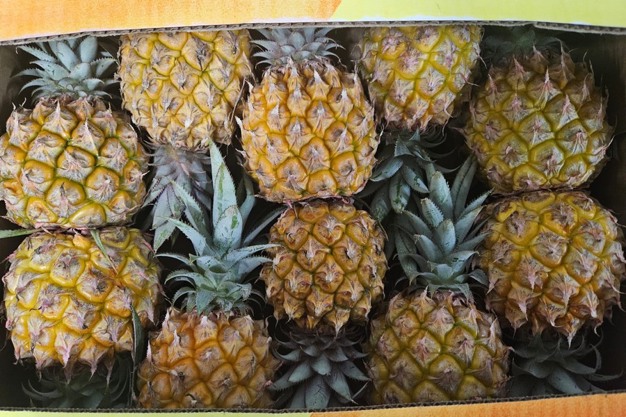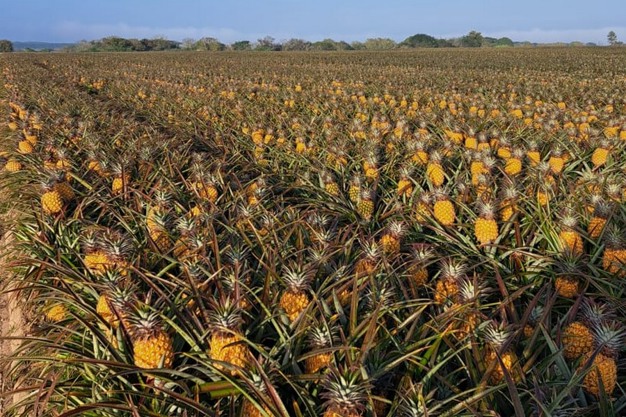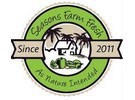Are freight rates affecting the distribution of unique produce items such as the Baby (South African) Pineapple? For Seasons Farm Fresh, Inc., the small pineapple used to be a more regular item for the company. That said, it's supplying less and less each year, though it does continue to increase its shipments of the fruit around holidays such as Lunar New Year or Jewish holidays.
"These Baby Pineapples, the Queen Victoria variety, are a different variety than the regular pineapples. It's much sweeter with very high Brix and smaller and you can also eat the core. It's not as fibrous as the regular pineapple core," says Nick Bernal of Seasons Farm Fresh. The more common commercial pineapple is an MD2 pineapple which grows in a variety of regions, including largely in Costa Rica.
 Baby Pineapples are much sweeter with very high Brix, smaller and you can also eat the core.
Baby Pineapples are much sweeter with very high Brix, smaller and you can also eat the core.
The Baby Pineapples have had more predominance in markets such as the Middle East, where it's used for decoration and gift-giving though Europe has also been a good market for the product as well. "While it's been shipping to the U.S. for decades, it's always been on the fringes of the pineapple world because of the price point," says Bernal. After all, the fruit is flown in from South Africa, and increased air freight rates have in turn raised the overall cost of the fruit.
Expanding pineapple category
At the same time, the pineapple category is also seeing an increasing amount of unique varieties such as the Pink Glow pineapples. "I think that's taken away a bit of the shimmer from the Baby Pineapple," says Bernal, who adds that South Africa's challenging weather conditions–from excess rains to droughts–have also been hard on the product. With such high Brix, those conditions leave them susceptible to damage.
As for demand for the Baby Pineapple, which Bernal says in the U.S. is still largely used as a decorative item, it's settled somewhat and hindered by that increased price point. "The price has elevated every year so the demand is really only there at certain times of the year," he says. He notes that there used to be stronger demand in Miami for example where the pineapple would be used in foodservice applications, including as an item to serve drinks in. "At a certain price point, that was a very good market but it became cheaper for them to buy bigger pineapples and use those over the Baby Pineapples."
 Baby Pineapples have had more predominance in markets such as the Middle East and Europe.
Baby Pineapples have had more predominance in markets such as the Middle East and Europe.
Yet, consumer produce preferences continue to evolve, particularly since the pandemic. In categories such as grapes and apples, unique varieties are becoming increasingly available on supermarket shelves. "So what started in those fruits is spreading out to other fruits–you're seeing it in mangoes too," says Bernal. "Consumers are becoming more educated about produce and wanting more." In turn, as the prices on those specialty varieties start coming down, demand for pineapple varieties, for example, will likely take hold as they have done in grapes and apples.
With that in mind, Bernal himself has his eye on the Sugarloaf pineapple. Reintroducing the white, sweet pineapple is a longer-term project he's working on with growers in Hawaii and the Bahamas to try and revive that industry.
 For more information:
For more information:
Nick Bernal
Seasons Farm Fresh, Inc.
Tel: +1 (305) 608-9020
nick@seasonsfarmfresh.com
https://seasonsfarmfresh.com/
